ecosystem-guides.com
....exploring the planet's ecosystems
NEOTROPICAL
(SOUTHERN SOUTH AMERICAN)
Cool Temperate Grasslands
Patagonian Steppe
The cool temperate grasslands of southern South America are the iconic Patagonian Steppe...

These grasslands occupy a large part of the eastern part of southern South America. In some classifications it is also called the Patagonian Desert, due to the overall lack of rain. The westerly winds off the ocean drop moisture on the mountainous west coast of South America, and thus this is where temperate forests grow. However, by the time the winds reach over the mountains and into the eastern region, they have had their moisture taken out and are drier. Thus it is mostly grasslands that dominate in this rain shadow of the Andes. And while the winds are dry, they are still strong: one of the most presistent and notable features of these open plains is the constant wind. The Patagonian steppe is mostly found in southern Argentina, but they also sneak into south-eastern Chile. These flat open areas continue into the north where the grasslands become the Pampas in Argentina and Brazil, and in the Andes where the high altitude grasslands are known as the Puna. To the south, this habitat and some elements such as Upland Geese and Long-tailed Meadowlark, continue in the subantarctic tundra-like grasslands of the Falklands/Malvinas.
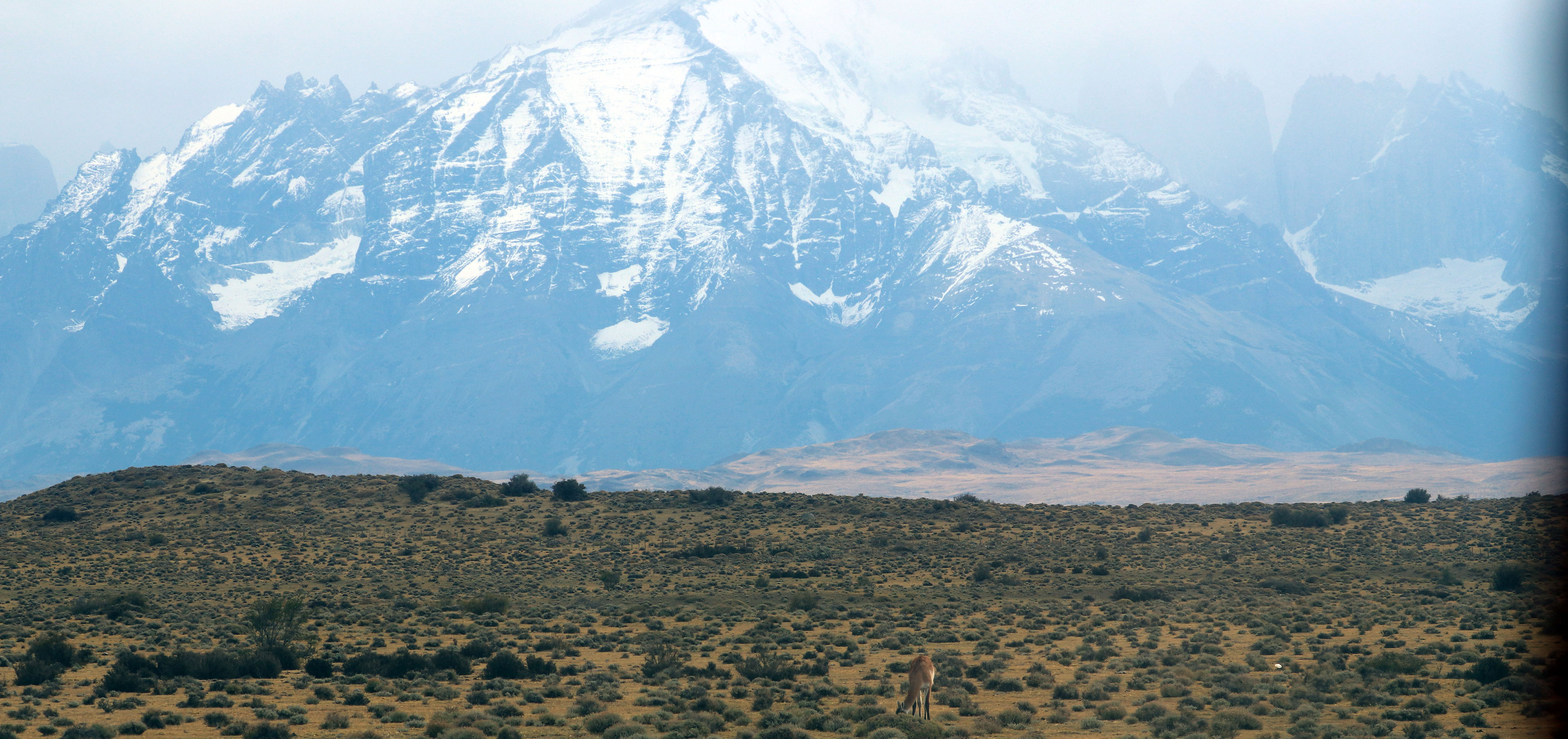
Being grasslands, this habitat is obviously dominated by many grasses, including clumping species of Festuca, Stpia and Poa. But to be honest, you probably won't take much note of these species, and in summer your eye will instead be distracted to by more colourful plants, such as the flowers of Berberis and Oxalis enneaphylla 'Woodsorrel' (below). This plant was also called 'Scurvygrass' because it was used to stave this off by early sailors going around Cape Horn, including the crew on Beagle with Charles Darwin.
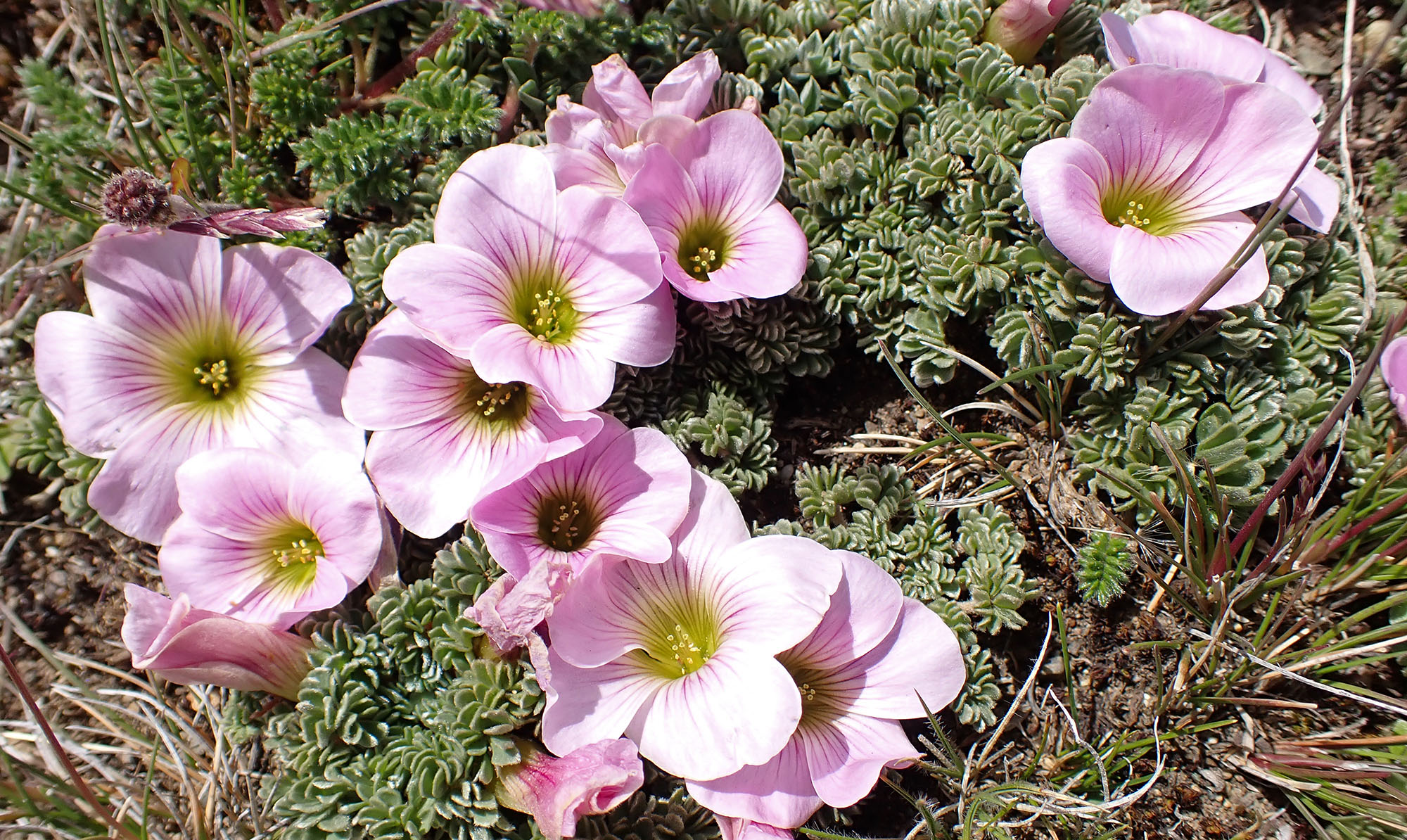 Oxalis enneaphylla 'Woodsorrel Scurvygrass'
Oxalis enneaphylla 'Woodsorrel Scurvygrass'One of the symbols of the open Patagonia grasslands is the 'Lesser Rhea' or 'Darwin's Rhea'. This is of course the largest bird in the habitat, and as such, tends to be obvious when around. After mating, the male brings up their striped chicks. When not breeding these birds are usually observed in groups. While they eat the occasional small animal, they are mostly grazing plant material across the grasslands.
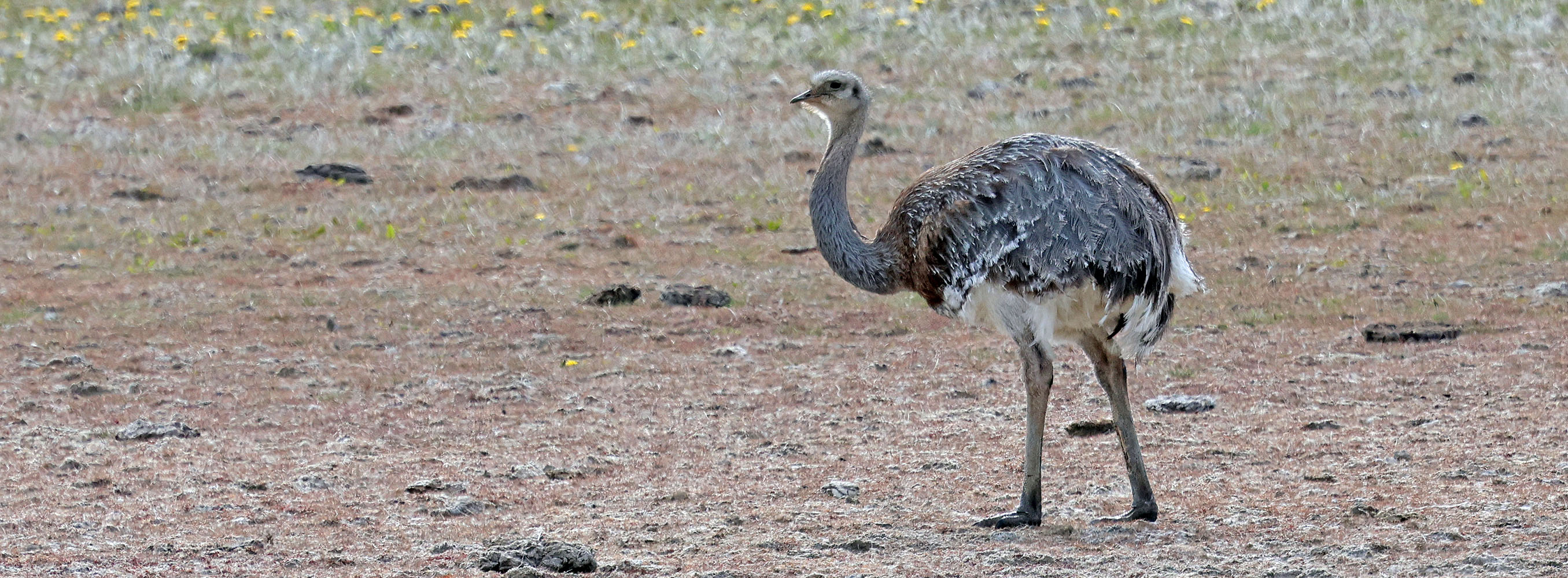
The main scavenger of the Patagonian Steppe is the Crested Caracara. They are often and easily seen along the side of the roads waiting to pick away at squashed road kill.
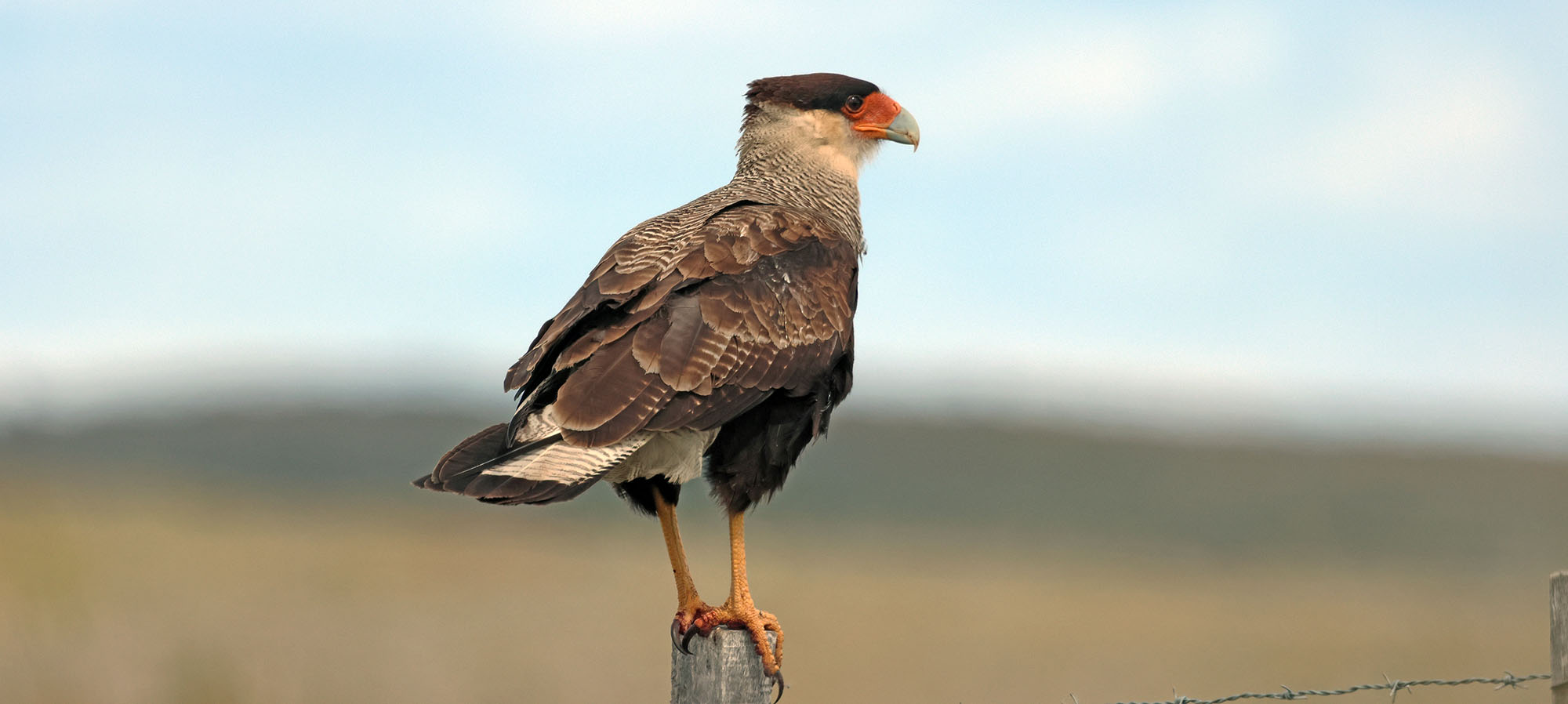
A bird that is widespread across the various more open arid habitats across South America is the often overlooked Least Seedsnipe.
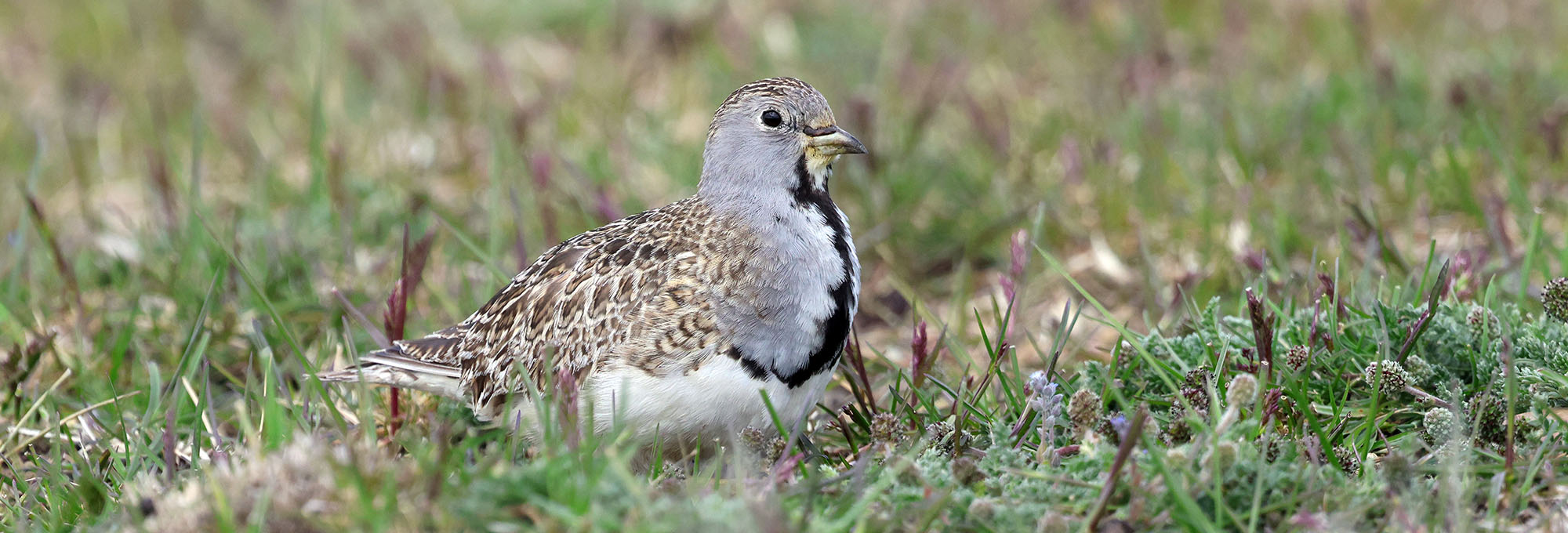
The largest predator on the Patagonian Steppe is the Puma, the same species as the 'Mountain Lion' of North America. There are smaller carnivores, including two species of canid: these 'South American Fox' are not closely related to the true Foxes of the Vulpe genus in Europe, such as the widespread Red Fox. Below is the 'Chilla', Lycalopex griseus.
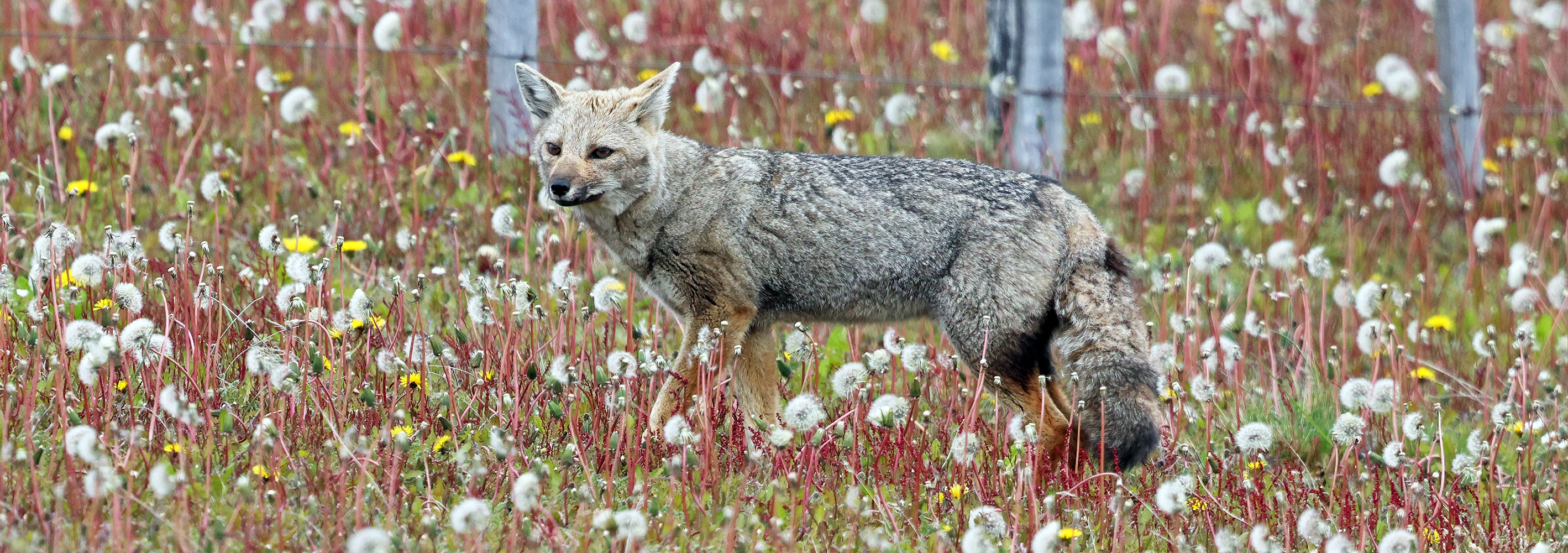 South American Grey Fox (south-east of Puerto Natales)
South American Grey Fox (south-east of Puerto Natales)Places to experience the Patagonian Steppe...
The Patagonian steppe mostly occurs in the country of Argentina. There is only a a relatively small amount in Chile, but it is better known here and more commonly seen by tourists as this is where the famous and scenic Torres del Paine national park is found. This is usually accessed through the town of Puerto Natales. The national park can get busy with day buses, but is an excellent place to explore the Patagonian Steppe, and there can be good wildlife, such as Lesser Rhea and Guanaco. The grasslands are also better known from Chile because they surround the town of Punta Arenas, where several Antarctic tour vessels start and end their expeditions.
 The author, on the 'big sky' country of the Patagonian grasslands, with a few Guanacos in the background.
The author, on the 'big sky' country of the Patagonian grasslands, with a few Guanacos in the background.


